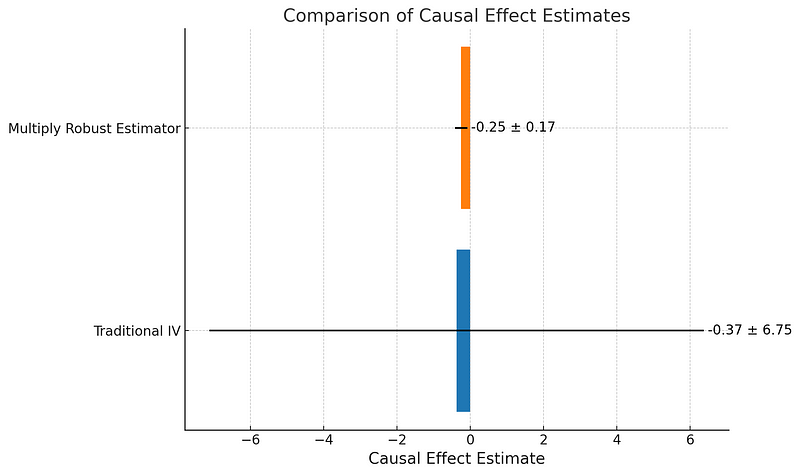Unlocking Causal Insights: A Revolutionary Statistical Methodology
Written on
Chapter 1: Understanding Causation
In the realm of scientific inquiry, the saying "correlation does not imply causation" serves as a critical reminder of the difference between simple associations and genuine cause-and-effect relationships. Grasping causal effects is essential for making informed decisions and crafting effective policies, especially in areas like healthcare, economics, and social sciences. By accurately identifying these effects, we can better understand the true impact of interventions, ultimately enhancing outcomes and quality of life.
Evaluating causal effects poses a significant challenge in statistics, particularly when it comes to unmeasured confounders. The complexity increases when instrumental variables (IVs) are absent in the main population of interest. However, a recent innovative approach offers a new way forward: utilizing IVs derived from auxiliary populations to deduce causal effects in a primary population. This strategy eliminates the need for homogeneity assumptions and introduces a robust estimator that remains consistent even in cases of partial data model misspecification. This breakthrough opens new avenues for precise and dependable causal analysis across various disciplines.
The Power of Instrumental Variables
Instrumental variables have long been recognized as a robust method for uncovering causal relationships when conventional techniques fall short. They allow researchers to control for unmeasured confounding by employing external factors that affect the treatment but do not influence the outcome directly. Nonetheless, sourcing appropriate IVs within the primary population can be challenging. By drawing IVs from auxiliary populations, researchers can now bypass this limitation. This method facilitates the integration of data across different studies, thereby bolstering the robustness and validity of causal inferences. This advancement paves the way for more thorough and accurate analyses, benefiting fields from economics to epidemiology.
Statistical Rethinking 2023 - 10 - Counts & Hidden Confounds - This video explores the intricacies of causal inference and the challenges posed by hidden confounders, providing insights into modern statistical methodologies.
Multiply Robust Estimation
A significant innovation in this new approach is the creation of a multiply robust estimator. This estimator maintains its consistency even if certain aspects of the data model are incorrect, as long as at least one element is accurately specified. This resilience guarantees dependable results in real-world situations, where perfect model specification is often unattainable. Furthermore, the multiply robust estimator achieves local efficiency, providing the most accurate estimates possible given the available data. This combination of robustness and efficiency makes it a vital tool for researchers, facilitating more precise and reliable causal analysis across a variety of applications.
Here is a graph comparing the causal effect estimates using traditional methods and the new multiply robust estimator approach.

Real-World Applications and Impact
The efficacy of this innovative approach has been validated through simulation studies and practical applications, such as assessing the causal effect of smoking on physical health in higher-income individuals using data from lower-income demographics. These findings showcase the practical utility of utilizing auxiliary data to derive causal relationships within a primary population. The flexibility and robustness of this method make it a valuable tool across various fields, from public health to social sciences. It presents a means to generate more accurate insights and guide better decision-making, ultimately fostering improved outcomes and advancements in numerous domains.
Cross-Population Insights
Utilizing data from diverse populations allows researchers to infer causal effects even when direct IVs are absent in the primary population. This cross-population approach strengthens the robustness and validity of causal inferences, leading to more comprehensive analyses.
Multiply Robust Estimator
The multiply robust estimator's consistency, even amidst partial data model misspecifications, ensures reliable outcomes, making it an indispensable tool for real-world causal analysis where perfect specification is rarely achievable.
Local Efficiency
Achieving local efficiency implies providing the best possible estimates based on available data. This characteristic of the multiply robust estimator ensures that researchers obtain the most accurate and dependable causal estimates, elevating the quality of their analyses.
Real-World Applications
The innovative method has practical uses, such as evaluating the causal effect of smoking on physical health by analyzing data from various income groups. These applications demonstrate the method's utility and impact across diverse sectors, from public health to social sciences.
A Bright Future in Causal Analysis
The advancements in utilizing IVs from auxiliary populations and developing multiply robust estimators signify a major progress in causal analysis. These innovations not only enhance the accuracy and reliability of causal inferences but also broaden the range of applications across numerous fields. By overcoming the constraints of traditional methods and providing more robust tools for researchers, this approach promises to significantly advance our comprehension of complex causal relationships. The future of causal analysis is promising, with these new tools empowering researchers to uncover deeper insights and make more informed decisions, ultimately leading to improved outcomes and advancements across various domains.
Science Before Statistics: Causal Inference - This video delves into the foundational concepts of causal inference, highlighting its significance in scientific research and statistical analysis.